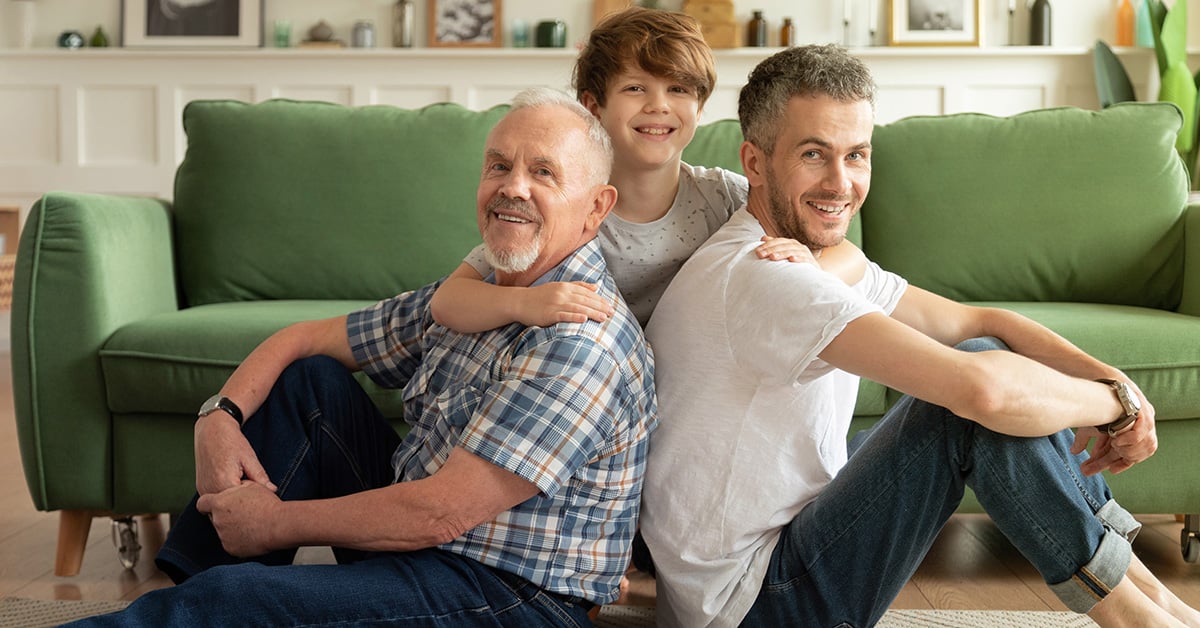The Rise of Multigenerational Living

Multi-generational living has risen in previous years as adult-aged children stay at home longer – or return to the nest – to nurse their pennies for a house or apartment deposit.
But as the Federal Budget noted recently, nan and pop, nonna and nonno, yia-yia and papou so on, are keen to stay at home as well, rather than head off to the nursing home.
Aged Care Services Minister Ken Wyatt acknowledged this, saying: “We have heard very clearly from senior Australians across the country that they want to receive aged care services in their home”.
Indeed, the Budget noted that more than 100,000 people are on a waiting list for aged care packages, with varying levels of need.
So, while most young adults perceive the move back home as a short-term fix to get their finances together, grandparents regard it as an important time to maintain a level of independence and spend quality time with children and grandchildren.
Multi-generational living in not a typically uncommon practice in Australia – its profile has in part expanded on the back of the nation’s rich diversity, where several generations under the one roof is common in certain cultures – but the fact we are an ageing population will further this trend. In 2016 there were 3.7 million residents (15 per cent of the population) aged over 65, and the proportion is on an upward trajectory as Baby Boomers enter the retirement age.
According to the ABS, the number of households with ‘other related persons’ living at the one dwelling – this classification includes elderly parents living with their adult children, as well as adult siblings - will grow exponentially over the next two decades to account for something in the order of 800,000 households by 2036.
Studies have found its companionship which is the prominent driver for elderly residents to move in with their adult children and their offspring. But the benefits are also reciprocated, with their adult children enjoying the prospect of babysitting and domestic assistance offsetting work and lifestyle demands. Overall, it can create a richer family environment.
So, what does this mean for the property market?
It will mean properties with granny flats or separate residences on the same allotment will rise in-demand. While these additional living spaces have been prominent earners in the social economy, it’s their appeal amongst multi-generational owner-occupants which will underpin capital growth.
One such example is at 13-14 Branca Court, Narre Warren North, which is being marketed by John Deo and Rohullah Paykari of LJ Hooker Hampton Park.
According to 2016 data, Narre Warren has a lower proportion of older residents (15.3 per cent of its total population) compared to the Greater Melbourne region (19 per cent), in part because of the lack of lifestyle options for this demographic.
“There are fewer lifestyle opportunities that allow for multi-generational living in the area,” said Mr Deo.
“Many older people must move away from the area they’ve lived in all their lives because they can’t live independently, leaving lifelong friends and family.”
Overcoming the issue of space and privacy created by multi-generational living, the home has a separate second dwelling.
“Just as it was used by the sellers, at this home the grandparents could live independently and walk next door and be with their children - who are often their carers – and grandchildren at any time they like."
“(The second home) is far from being a granny flat: it’s a second home that you’d compare alongside other free-standing dwellings throughout (City of) Casey.”
Indeed, the second residence includes a timber kitchen, gas cooking, a master bedroom with ensuite and walk-in-robe, whilst the two remaining bedrooms – which have built in robes – are built around a bathroom in good condition. It also boasts ducted heating and evaporative cooling as well as its very own pergola and a double garage.
Multi-generational living will be a growing trend in Australia. Talk to your LJ Hooker property specialist today about how our ageing population will impact the local property market.
Benefits
- Companionship for elderly residents and richer upbringing for grandchildren
- Assistance with domestic duties and babysitting
- A richer upbringing for children
Challenges
- Reduced privacy and space through more people under the one roof
- Additional noise created



